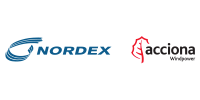11:30 - 13:00 Computational aerodynamics
Turbine technology


Room: Hall G2
The session deals with aerodynamics, in particular computational aerodynamics. The session investigates a typical enginering blade element momentum (BEM) aerodynamic model, and demonstrates the merits of less empiric but computationally more comprehensive CFD modelling for yawed conditions and for tip vortex breakdown. We will also discuss the validation by 2D wind tunnel tests for high Reynolds numbers and how to use aerodynamics computations to analyse the effect of protuberances on blades.
You attended this session?
Learning objectives
- Understand and assess the limitations of engineering computational aerodynamics tools versus CFD;
- Understand opportunities and challenges of using CFD for aerodynamic computations;
- Understand uncertainties of wind tunnel tests for validation of computational eaerodynamics;
- Understand how protuberances on blades may affect performance.
This session will be chaired by:


Presenter

Co-authors:
Stefan Kleinhansl (1) F
(1) Aero Dynamik Consult GmbH, Neuhausen, Germany
Presenter's biography
Biographies are supplied directly by presenters at WindEurope Summit 2016 and are published here uneditedStefan Kleinhansl is the chief executive of Aero Dynamik Consult GmbH (ADC), which has been carrying out load calculations and designing wind turbine rotor blades for over twenty-five years. He has developed a finite-element-based, nonlinear aeroelastic load calculation program, ADCoS, and has designed many rotor blades for leading turbine manufacturers, including the Enercon E40, E66 and E70 blades. He held a chair in wind energy design at the University of Stuttgart from 2010 to 2011.





Follow EWEA on: